Faye Haskins was archivist and then photo librarian in the Special Collections Division, Washingtoniana Collection at the District of Columbia Public Library where the papers of the Washington Star newspaper and the Star photo collection are held. She holds masters degrees in history and library science from the University of Maryland and is the author of The Art of D.C. Politics: Broadsides, Banners, and Bumper Stickers and Behind the Headlines: The Evening Star s Coverage of the 1968 Riots , journal articles published in Washington History , a publication of the Historical Society of Washington, D.C. She is an independent author and historian who now lives in the Hill Country near Austin, Texas.

Praise for The Evening Star
Faye Haskins masterfully gives us both the history of this greatest of American afternoon newspapers and captures the spirit of its unique role for more than 150 years in the life of the Capital of the United States. Carl Bernstein
Important reading for anyone who has an affection for journalism or Washington or both. John Kelly, Metro Columnist, The Washington Post
The rise and fall of the Washington Star stands as a morality tale for modern journalism. Faye Haskins careful history reveals how the Star became a great paper, how well it covered the news of its day, and why it failed to survive. Donald A. Ritchie, author of Reporting from Washington: The History of the Washington Press Corps
The life and death of an institution like the Washington Evening Star is painful enough to live throughto believe that a great papers and a great citys fates were intertwined. Reading this history leaves one with the realization that a dying publication was not indicative of a dying city. Fayes recapitulation forces one to wish the Evening Stars fate had mirrored that of Washington. And that is a painful reminder for all of us exes who were so Star Struck. Paul Delaney, former New York Times National Editor
The Evening Star
The Evening Star newspaper was established in 1852. The papers name was changed to the Washington Star-News in 1973 after the Noyes, Kauffmann, and Adams families, who owned the paper, purchased The Washington Daily News . In 1974 when Joseph Allbritton bought the paper, its name was changed to The Washington Star on the masthead, where it remained until the paper closed in 1981. The more common term for the paper was the Star , which is most often used in the text of this book.
Published by Rowman & Littlefield
An imprint of The Rowman & Littlefield Publishing Group, Inc.
4501 Forbes Boulevard, Suite 200, Lanham, Maryland 20706
www.rowman.com
6 Tinworth Street, London SE11 5AL, United Kingdom
Copyright 2019 by The Rowman & Littlefield Publishing Group, Inc.
All rights reserved. No part of this book may be reproduced in any form or by any electronic or mechanical means, including information storage and retrieval systems, without written permission from the publisher, except by a reviewer who may quote passages in a review.
British Library Cataloguing in Publication Information Available
Library of Congress Cataloging-in-Publication Data
Names: Haskins, Faye, author.
Title: The Evening star : the rise and fall of a great Washington newspaper / Faye Haskins.
Description: Lanham : Rowman & Littlefield, 2019. | Includes bibliographical references and index.
Identifiers: LCCN 2019006064| ISBN 9780742548725 (cloth : alk. paper) | ISBN 9781538105764 (electronic)
Subjects: LCSH: Washington starHistory.
Classification: LCC PN4899.W32 W355 2019 | DDC 071.53dc23 LC record available at https://lccn.loc.gov/2019006064
 The paper used in this publication meets the minimum requirements of American National Standard for Information SciencesPermanence of Paper for Printed Library Materials, ANSI/NISO Z39.48-1992.
The paper used in this publication meets the minimum requirements of American National Standard for Information SciencesPermanence of Paper for Printed Library Materials, ANSI/NISO Z39.48-1992.
Contents
Guide
I wish to thank a number of people and institutions that helped me in researching and writing this book.
I am grateful to the staff of the Washingtoniana Collection, Special Collections Division at the D.C. Public Library for their research assistance and unfailing support for the book. Research in collections held in Wash-ingtoniana were crucial to writing an accurate account of the Star and the city in which it was published. I especially want to thank Derek Gray, who helped with extensive research in the papers of the Washington Star , and Michele Casto and Lisa Warwick, who assisted with photographs used in the book from the Star photo collection. I also want to thank Jerry McCoy, Mark Greek, John Muller, and Ayana Reed for their help and support.
Thanks to the many staff at archives and libraries for their research help, including Jennifer King, manuscripts librarian, Special Collections, George Washington University; staff in the Manuscripts and Periodicals Divisions of the Library of Congress; archivists Amy DeLong and Christina Jones at the National Archives and Records Administration, College Park, Maryland; librarian Jane Sween at the Historical Society of Montgomery County, Maryland; Jeffrey Schlosberg and other staff at the National Press Club Archives; reference archivist at the Wisconsin Historical Society; and Barbara Cline at the LBJ Presidential Library and Museum, Austin, Texas.
Without the reporters, editors, other Star staff or their family members who were open to discussing their memories of the Star , I could not have written this book. Many continued to be supportive and open to helping throughout the process. Persons who I interviewed appear in the notes and bibliography. Former Star staff who were also helpful but not specifically listed include: Joan Anderson, Carl Bernstein, Bernie Boston, Alan Bruns, Chuck Conconi, Phil Evans, Phil Falcone, Sara Harrison, Bruce Kinsey, Cody Pfanstiehl, and Carl Sell.
Newbold (Terry) Noyes III graciously offered me access to some of the personal papers of his father, Newbold Noyes. Terry also shared personal memories of his father and the Noyes family with me. His help provided important insights into his fathers professional and personal life as well as the Noyes family.
Thanks to professional colleagues, including Jane Levey, Mara Cherkasky, and Roxanne Deane, who provided advice and encouragement. I am also very grateful for the patience and support of my family and friends during the many years I was preparing this book. Lastly, thanks to the staff at Rowman & Littlefield, including Christopher Anzalone (formerly with Rowman), who suggested I write this important book, and Jon Sisk, Kate Powers, Chelsea Panin, and Elaine McGarraugh for bringing it to final publication.
O n Pennsylvania Avenue in Washington halfway between the Capitol and the White House stands an iconic building that reminds us of a bygone era when powerful and influential city newspapers thrived. The Evening Star Building is a classic nineteenth-century Beaux-Arts structure built at the dawn of the twentieth century as a testament to the success and wealth of the Evening Star newspaper (later the Washington Star ). The Star was established in 1852 when the capital city was a backwater southern town. By 1900 the paper was the most financially successful newspaper in Washington and among the top ten in the nation, and would remain so for many decades into the twentieth century.
In the first five decades of the twentieth century, Washingtonians could choose to read news from at least four different daily newspapers published in the morning and afternoon in the city. Dailies were delivered to city homes, or Washingtonians bought them at newsstands or from newsboys who hawked them on city streets from dawn to dusk. City dwellers read their print newspapers at home and to and from work on streetcars that laced through the city. It was an era of large editorial staffs, reporters who wrote copy on typewriters and called in stories from telephone booths to dictation desks, dedicated local news beat reporters, and newsprint that rolled off pounding printing presses set by typesetters and delivered by union truck drivers or boys and girls with paper routes as their first jobs. Daily newspapers wielded great power and prestige in their hometowns and were more often trusted and respected than not by residents. The Star was at its pinnacle in this era at the heart of news and history in the nations capital. The papers history is the quintessential story of an earlier breed of city newspapers and a kind of journalism slowly disappearing. Yet it is also the singular story of the rise and fall of a once-great evening newspaper, its oft-told legends, and the famous and quirky people who passed through its noisy, untidy newsroom. The Star earned a unique reputation among journalists as a reporters paper, where reporters independence and judgment were encouragednot suppressedover an editors. Among the scores of journalists who flourished and were mentored at the paper were liberal syndicated columnist Mary McGrory, Pulitzer Prize winner Haynes Johnson, respected political reporter David Broder, and a young Maureen Dowd and Howard Kurtz, who started their careers there.



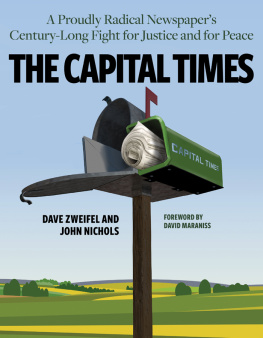
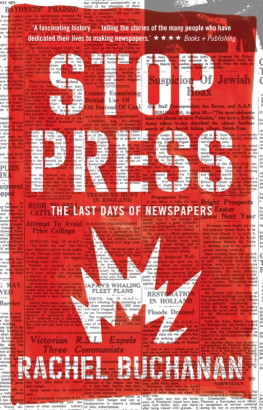

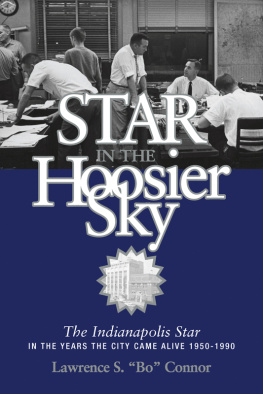
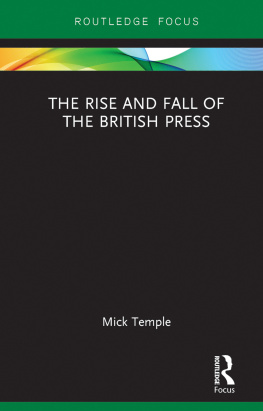
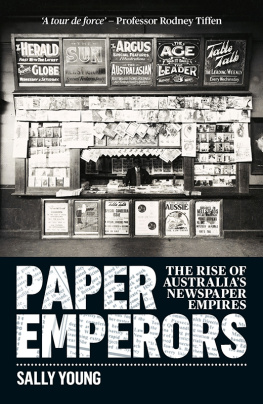
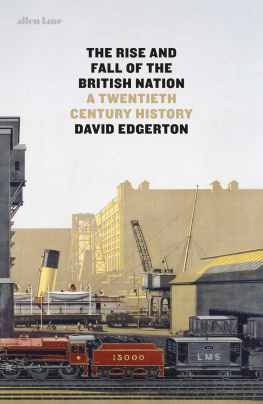

 The paper used in this publication meets the minimum requirements of American National Standard for Information SciencesPermanence of Paper for Printed Library Materials, ANSI/NISO Z39.48-1992.
The paper used in this publication meets the minimum requirements of American National Standard for Information SciencesPermanence of Paper for Printed Library Materials, ANSI/NISO Z39.48-1992.